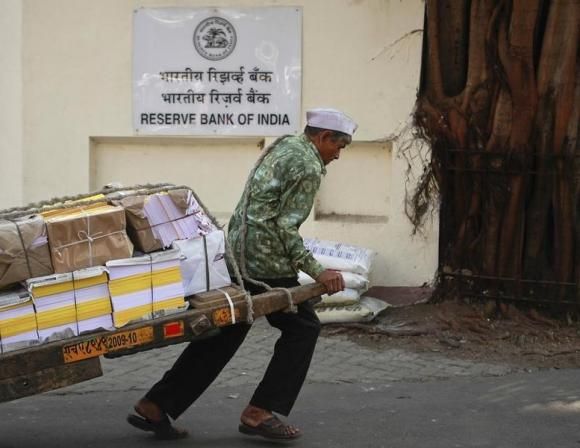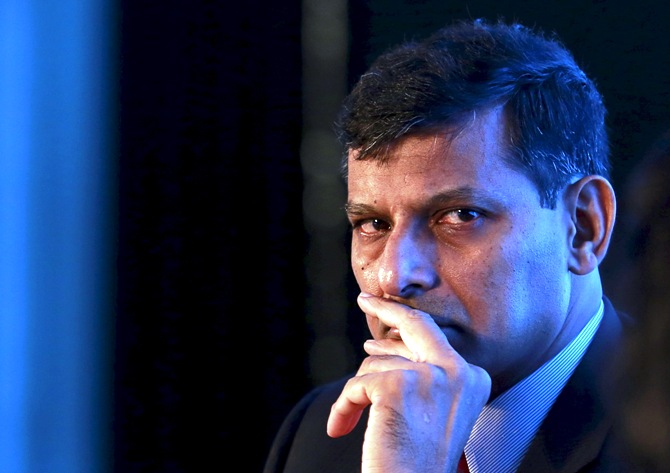
The idea is to ensure that changes in the policy rates translate into changes in borrowing costs for the aam aadmi and the aam company, note Abheek Barua and Bidisha Ganguly
While this column is meant to be largely on international financial markets, it would be remiss on our part not to take this opportunity to write about the paradigm shift in monetary management that the Reserve Bank of India monetary policy announced on April 5.
The irony, to us, is that RBI watchers have become so fixated on repo rate cuts that this critical change in the RBI’s approach seems to have neither got the quantum attention or the kudos it deserves.
What the RBI effectively said was that it would, over a period of time (this is critical) move from maintaining persistent liquidity deficit in the banking system to a regime where liquidity is neutral.
In lay terms, it meant that instead of the banking system having to borrow every day from the central bank (offering government bonds as collateral) and paying the repo rate, it would now be in a situation where, on average, banks have enough cash.
Of course, there would be some episodes when there is surplus cash alternating with episodes when cash is short.
If banks have a surplus, they have the option of parking the money with the RBI and earning the reverse repo rate (now at six per cent) or lending it to borrowers.
If on the other hand, there is a temporary cash deficit, it has the RBI to turn to with the repo rate being the interest paid.
This 'neutral' regime is not new.
The RBI chose to move from a 'neutral' to a 'deficit' regime six years ago.
Part of this decision to engineer a liquidity shortage was to fight the strong inflation trends that had surfaced at that time and the central bank felt that a sustained deficit of one per cent of total deposits in the banking system would do the trick.
Why the change in strategy then?
We would guess that the RBI now believes that it has, with the help of the government, brought inflation under control.
The more compelling reason to move to a neutral regime is to achieve transmission -- to ensure that changes in the policy rates (repo and reverse repo that move in tandem) actually translate into changes in borrowing costs for the aam aadmi and the aam company.
Why wasn’t his happening earlier?
Banks had complained that it was not just the cost of short-term money that held them back from responding to the RBI’s policy changes.
It was also the quantum of free cash.
In a deficit regime, they had to constantly fret about how much they would have to borrow every day to keep their business going as well as about future borrowings, and this naturally held them back from reducing both the deposit and loan rates.
Now with the assurance of adequate liquidity, the decision shifts to what they would do with the funds that depositors give them.
To put it somewhat simplistically, they are faced with two options -- first, to be lazy and park their money with the RBI and second, to actively solicit borrowers.
As the RBI lowers the policy rate, the return on cash held with the central bank dips.
Thus, lower the policy rates more the pressure on the banks to find borrowers.
The easiest way to get a borrower is to offer him or her a lower interest rate or equated monthly instalment.
In short, the process of transmission from the policy rate to actual lending and borrowing rates becomes smoother.
How soon will this happen?
The RBI Governor wasn’t too sure of the time frame.
The liquidity gap can be bridged either by the RBI buying bonds from banks (open market operations or OMOs) and give them cash or by buying dollars from the market and paying in rupees.
Since dollar flows are somewhat unpredictable, the ready tool that the RBI has are the OMOs.
Going by HDFC Bank’s estimates, the RBI would have to infuse roughly Rs 1.10 lakh crore (Rs 1.10 trillion) into the system to get to a neutral position. Doing this, while keeping an eye on inflation, on the rupee (that might depreciate beyond desired limits if there is a deluge of the currency) is not an easy task.
Be that as it may, the RBI has decided to move to a more stable, predictable interest rate regime. That surely is a good thing.
Abheek Barua is chief economist, HDFC Bank. Bidisha Ganguly is principal economist, CII












 © 2025
© 2025